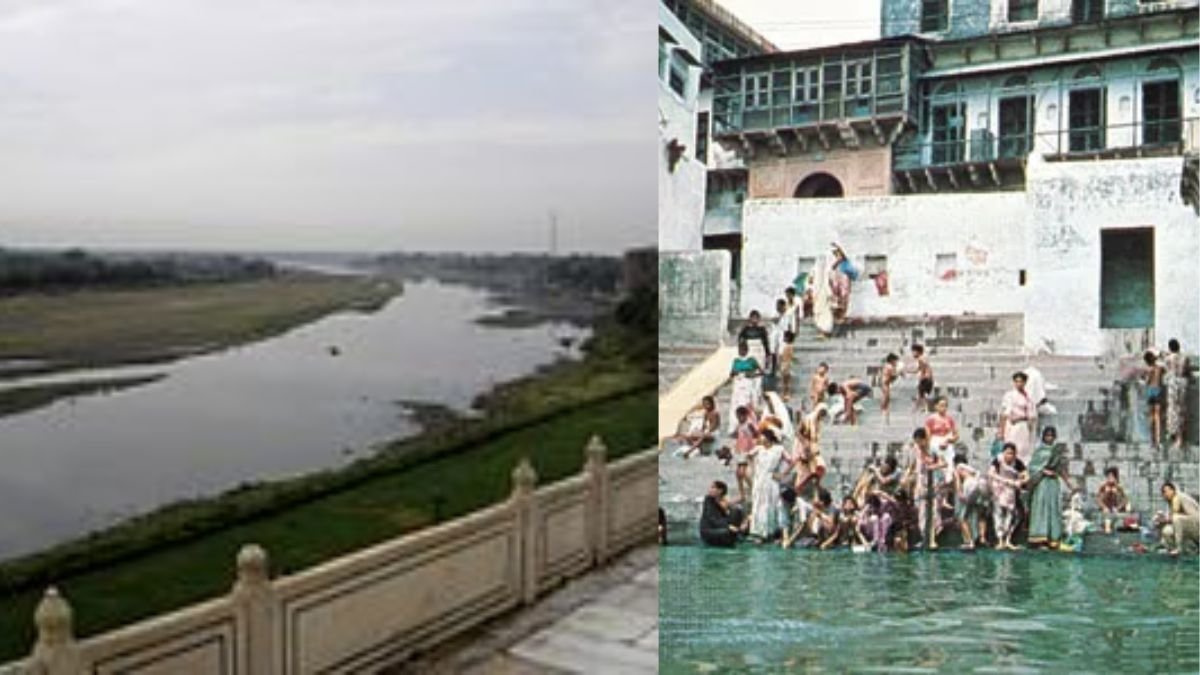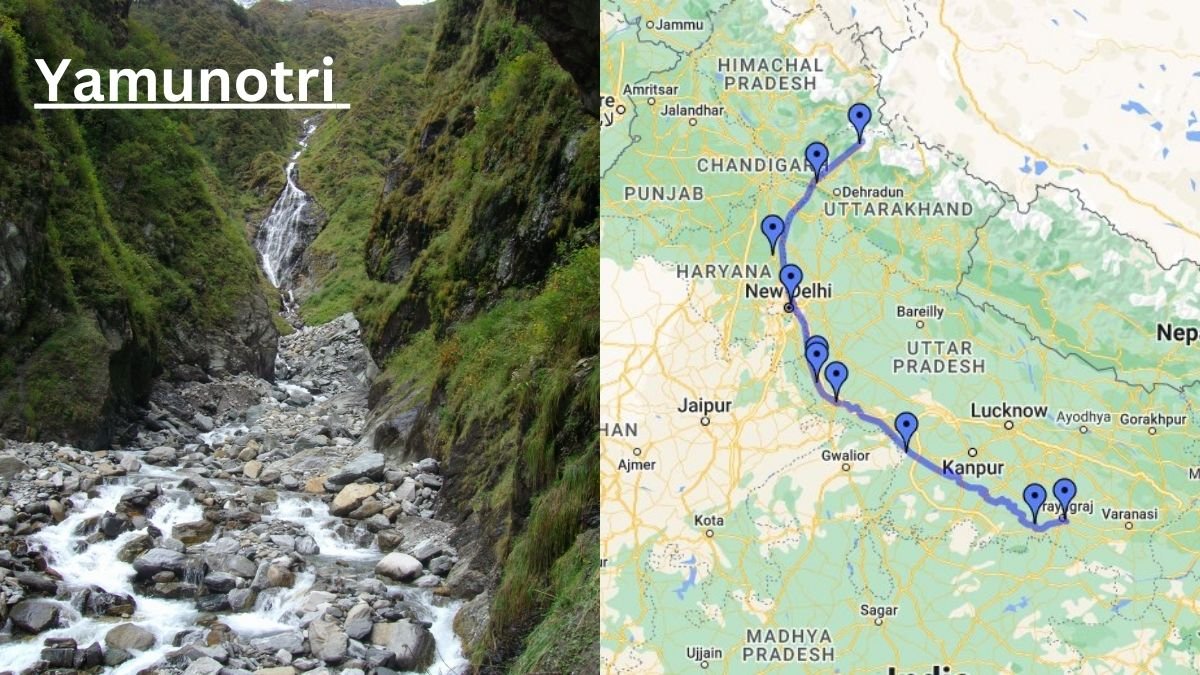
Yamuna River
The Yamuna River, also known as ‘Jamuna,’ holds immense historical and mythological significance in India. Despite its unfortunate pollution over time, the river has recently garnered attention due to the severe impact of monsoon rains, which have affected various areas of Delhi. In order to appreciate the river’s importance, it is essential to delve into its ancient and mythological history.
Geology of the Yamuna River
The geological aspects of the Yamuna River revolve around sediment analysis and the examination of silt deposited in its bed. Through atomic adsorption spectrometry, researchers have studied sediments collected from urban centers like Delhi and Agra to determine their concentration and distribution. This analysis has identified approximately nine heavy metals, prompting further investigation into their composition and diversity.
Geography of the Yamuna River
The Yamuna River, spanning approximately 1,376 kilometers, plays a vital role in North India. It stands as the longest and second-largest tributary of the Ganges River. Along its banks, prominent Indian cities such as Mathura, Noida, Hamirpur, Allahabad, Baghpat, Delhi, Etawah, Kalpi, and Agra thrive.
Origin and Course of the Yamuna River
The Yamuna River traces its origin to the western Himalayan mountain range, specifically from the Yamunotri Ice Glacier on the southwestern slope of the Bandarpooch peaks in Haridwar, Uttarakhand. At an altitude of approximately 6,387 meters above sea level, the river embarks on its journey.

Initially flowing south and then southeast, the Yamuna River runs parallel to the Ganges River, flowing just west of it. Along the Himalayan Mountains and through the plains of northern India, the river meanders for about 200 kilometers, traversing a series of valleys that straddle the border between the Indian states of Uttar Pradesh and Haryana. Before merging with the Ganges at Allahabad, the Yamuna River passes through major cities like Delhi and Agra.
Tributaries of the Yamuna River
The Yamuna River is fed by numerous tributaries, with notable ones including the Tons River, Betwa River, Chambal River, Ken River, and Sindh River. Among these, the Tons River stands as the largest tributary. After receiving water from these major tributaries, the Yamuna River eventually joins the Ganges River. Additionally, it converges with the underground Saraswati River in Allahabad.
Wildlife and Environment of the Yamuna River
The Yamuna River’s ecosystem encompasses the diverse species within the Yamuna River basin and the lush greenery that surrounds it. The river’s environs teem with wildlife, featuring dense forests that house herds of rare Asian elephants.
Religious and Mythological Significance of the Yamuna River
The religious and mythological importance of the Yamuna River stems from its association with various Indian gods and goddesses. The river’s patron goddess, Yamuna, also known as Yami, is the daughter of Lord Surya, the sun god, and the sister of Lord Yama, the god of death. Legend has it that the river was blessed by Lord Krishna when Vasudeva crossed it with the infant Krishna. As the child fell into the river, the dust from Krishna’s lotus feet instantaneously purified the Yamuna.
The Yamunotri, the source of the Yamuna River, holds significant reverence as the abode of Goddess Yamuna. It is one of the four sacred sites of the Char Dham Yatra pilgrimage in India. At the Yamunotri, devotees can visit a temple dedicated to Goddess Yamuna, which remains closed from November to May. Additionally, the Hanuman Ganga converges with the Yamuna River at Hanuman Chatti, a remote hill station believed to have been the hermitage of Asita Muni, an ancient sage of India.
The Triveni Sangam, located near Allahabad, represents the confluence of three renowned rivers in India: the Ganges, Yamuna, and Saraswati. This place has evolved into a revered pilgrimage site. According to popular beliefs, individuals who immerse themselves in the holy waters of the Yamuna River are blessed with protection from death and fear. Notably, a hot water pool at Yamunotri is used to prepare ‘Prasad,’ a food item used during religious offerings.
Economic Importance of the Yamuna River
The Yamuna River’s significance extends to its economic impact, particularly in the Indo-Gangetic plain, thanks to the numerous canals that utilize its waters. These canals have facilitated irrigation across vast areas of India, playing a crucial role in agriculture. Moreover, the cities situated on the riverbanks discharge household and industrial waste into the Yamuna River.
Pollution and Conservation Efforts for the Yamuna River
The pollution and conservation of the Yamuna River revolve around the detrimental effects of pollutant discharge and the subsequent measures taken to restore its ecological well-being. The river’s pollution levels are especially severe near New Delhi, where a significant portion of the city’s waste is dumped into the river. The Indian government has undertaken initiatives like the Yamuna Action Plan to address this issue, but substantial progress is yet to be achieved.
The flow of Yamuna is not very fast. It shrinks to a small stream in summer as it passes near Agra, partly due to the amount of water carried by the canals for irrigation and domestic consumption.
However, the river has become one of the most polluted rivers in India, as most of its flow passes through highly populated areas where huge amounts of sewage are directly discharged into it.
In the early 1990s the national government, with financial assistance from Japan, began implementing the Yamuna Action Plan, a multiphase project that has been partially successful in reducing pollution levels in the river.
10 facts about river Yamuna:
- The Yamuna River is the second longest river in India after the Ganges.
- It is the longest tributary of the Ganges, with a length of 1,376 kilometers (854 mi).
- The Yamuna River originates from the Yamunotri Glacier in the Himalayas in the state of Uttarakhand.
- It flows through states like Uttarakhand, Haryana, Delhi, and Uttar Pradesh before falling into the confluence of the river Ganges at Allahabad and eventually merging with the Ganges.
- The Yamuna River is a sacred river in Hinduism and is mentioned in several Hindu texts, including the Ramayana and the Mahabharata.
- The Yamuna River is also a major source of irrigation and drinking water for millions of people in India.
- However, the Yamuna River is also one of the most polluted rivers in India due to industrial and agricultural effluents.
- The Government of India has taken some steps to clean the Yamuna River, but more steps need to be taken.
- The Yamuna River is home to a wide variety of wildlife including fish, birds, and mammals.
- The Yamuna River is an important part of India’s cultural and religious heritage.
some additional facts
- The meaning of the name Yamuna is “twin sister” in Sanskrit.
- Yamuna River is also known as Jamna in some parts of India.
- The Yamuna River is a popular tourist destination, especially for religious pilgrims.
- The Yamuna River is home to several historical and cultural sites including the Taj Mahal.
River Yamuna is an important resource for the people of India and its conservation is essential. - Yamuna has also been called Kalindi in ancient texts.
- What is the difference between global warming and climate change?
- Exploring Physical Geography: Understanding the Earth’s Natural Processes and Their Impacts
- 300 Important Geography Questions and Answers for UP TGT PGT 2022
- Latitude, Longitude, International Date Line, and Time